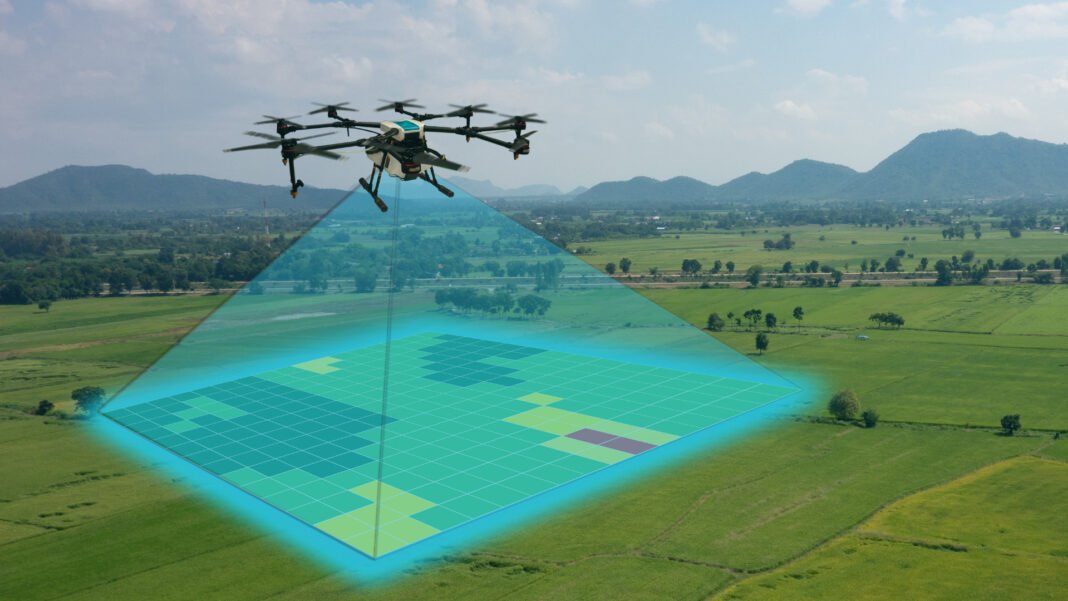Plant Studies with Drone in Abu Dhabi
Abu Dhabi is taking a significant step forward in environmental research by utilizing cutting-edge drone technology and smart sensors to conduct the region’s largest plant life study. This groundbreaking initiative is set to revolutionize how we understand and manage the delicate balance of native vegetation in a rapidly changing world.
The Focus on Drones: A Game Changer for Environmental Studies
Drones are not just for aerial photography or delivering packages anymore; they are now at the forefront of scientific research. In Abu Dhabi, drones are being deployed to track plant life across a vast expanse of over 11,000 hectares. This advanced technology enables researchers to monitor changes in vegetation that may be influenced by human activity or environmental factors with unprecedented accuracy.
Why Drones?
Using drones in environmental studies is a game changer. Traditional methods of plant life monitoring are time-consuming, labor-intensive, and costly. Drones, equipped with high-resolution cameras and smart sensors, can cover large areas quickly, providing real-time data that is both accurate and detailed. This method not only reduces costs and time by up to 90% but also opens new possibilities for environmental monitoring on a large scale.
A Young Emirati Team Leading the Charge
One of the most inspiring aspects of this project is the involvement of young Emiratis in the research process. A team of dedicated researchers is conducting this extensive study, bringing fresh perspectives and innovative approaches to environmental conservation.
The Role of the Environment Agency – Abu Dhabi (EAD)
The Environment Agency – Abu Dhabi (EAD) is at the helm of this ambitious project. By partnering with consultancy Dendra Co., EAD is leveraging global expertise and cutting-edge technology to ensure the success of this initiative. The partnership aims to create a comprehensive understanding of the native vegetation cover within and outside protected areas.
The Importance of Native Vegetation: Protecting Biodiversity
Native vegetation plays a crucial role in maintaining the biodiversity of an ecosystem. By assessing the health and distribution of these plants, researchers can gain insights into the overall health of the environment. The study aims to document changes in plant life, offering vital data that will inform future conservation efforts.
Impact on Protected and Non-Protected Areas
The research covers both protected and non-protected areas, providing a holistic view of the region’s plant life. This approach ensures that conservation efforts are not just limited to designated areas but extend to the broader environment, helping to safeguard biodiversity across the emirate.
The Role of Technology in Enhancing Research
Technology is at the core of this project. From the drones used to gather data to the smart geographic database platform developed to document all project information, every aspect of this study is enhanced by technological advancements.
Smart Geographic Database: Instant Reports and Accurate Analysis
One of the key components of this project is the development of a smart geographic database platform. This system is designed to document all information related to the project, allowing for the production of instant reports and accurate statistical analysis. The platform streamlines the research process, making it easier for the team to track progress and make informed decisions.
Seed Dispersal Using Drones: A New Approach to Conservation
In addition to monitoring plant life, drones are also being used to disperse seeds of local plant species in three areas within the emirate. This innovative approach to conservation helps to promote the growth of native plants, supporting the overall health of the ecosystem.
Reducing Costs and Time: A More Efficient Approach
One of the standout benefits of using drones and smart sensors in this study is the significant reduction in costs and time. Traditional methods of environmental monitoring can be costly and time-consuming, but this project demonstrates that technology can streamline the process, making it more efficient without sacrificing accuracy.
The Broader Implications: Informing Decision-Making
The data collected through this study is not just for academic purposes; it has real-world implications. By providing clearer guidance and enhancing decision-making processes, the research will help policymakers address environmental threats more effectively. The insights gained from this study will contribute to better management of natural resources, ensuring the sustainability of the region’s ecosystems.
A Model for Future Environmental Research
Abu Dhabi’s use of drones and smart sensors in the region’s largest plant life study sets a new standard for environmental research. This project not only showcases the potential of technology in conservation efforts but also highlights the importance of involving young, passionate researchers in the process. As the world faces increasing environmental challenges, initiatives like this provide a roadmap for how we can use technology to protect our planet.






